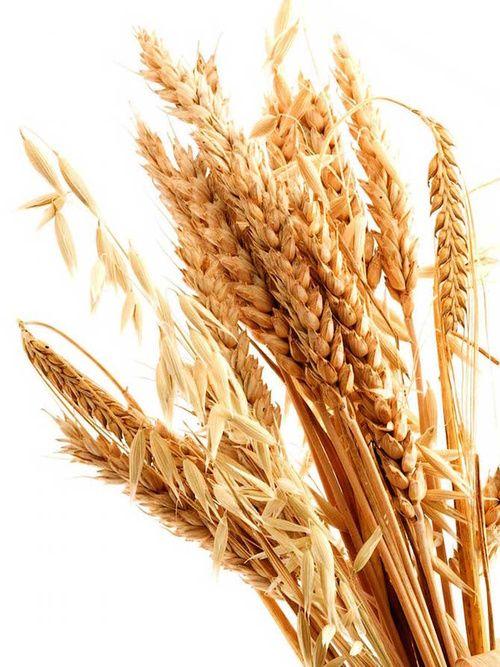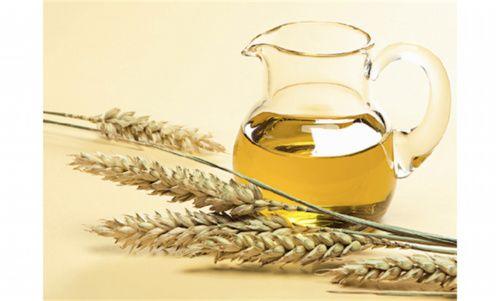Il wheat germ is a concentrate of nutrients, useful for regulating the cholesterol level in the blood and for skin disorders. Let's find out better.
> Description of the wheat germ
> Properties and benefits of wheat germ
> Calories and nutritional values of wheat germ

Wheat germ description
The wheat germ is one of the elements that form the kernels of wheat, obtained from Triticum aestivum. The germ occupies no more than 3% of the entire caryopsis. Wheat germ is a real concentrate of nutrients such as amino acids, fatty acids, mineral salts, B vitamins and tocopherols (vitamin E).
Wheat flour undergoes a refining process during which both the embryo and the outer envelope are eliminated. In this way, fiber, mineral salts and vitamins are lost.
They say about him
The wheat germ is the fundamental part of the seed, the embryonic one from which the whole plant will develop. It consists of three elements: the bran, which is the outer covering, the endosperm and, finally, the germ.
In the bran there are mostly insoluble fiber, good fats, B vitamins and mineral salts.
The endosperminstead, it is rich in protein, soluble fiber and carbohydrates.
Wheat germ is rich in protein, lipids and starches very useful for human health. However this is eliminated during the refining process because it changes the smell of the flour and lowers the shelf life of the foods in question.
In order not to lose the beneficial effects of wheat germ, therefore, this is consumed as natural oil or supplement.
Wheat germ, ally of
Wheat germ is particularly suitable for the growth of children, for the diet of the elderly, for athletes.
Find out why wheat germ is great for strengthening muscles
Properties and benefits of wheat germ
Wheat germ is rich in antioxidants and therefore is a valuable aid in the fight against free radicals. It is widely used in natural cosmetics, for the health of skin and hair, but it can also be used for several other purposes.
- Against acne. Wheat germ regulates the production of sebum if it is ingested, but it can also be used locally.
- Against cholesterol. Wheat germ is rich in Omega 3, useful for regulating the level of cholesterol in the blood and for the health of veins and arteries.
- For hair health. Wheat germ is useful for oily hair, dandruff, dull and brittle hair, dry skin.
- For skin health. Wheat germ oil is useful against wrinkles, stretch marks, scars and irritation and redness of the skin.
- For male fertility. Thanks to the vitamin E content, wheat germ is useful for improving male fertility.
- For athletes. Wheat germ contains octacosanol which improves physical as well as mental endurance.
- Against free radicals. The vitamin content of wheat germ, in particular vitamin E, gives it an important antioxidant action.
Wheat germ is rich in minerals, including magnesium, calcium, manganese, potassium, selenium, silicon, phosphorus, zinc, copper, sulfur, iron, and molybdenum.
You can learn more about the properties and use of wheat germ oil

Calories and nutritional values of wheat germ
100 g of wheat germ contends 408 kcal / 1708 kj.
Furthermore, for every 100 g of this product, we have:
- Water 10 g
- Available carbohydrates 55 g
- 28 g protein
- 10 g fat
- Cholesterol 0
- Sodium 3 mg
- Potassium 827 mg
- Iron 10 mg
- Calcium 72 mg
- Phosphorus 1100 mg
- Magnesium 255 mg
- Zinc 1,22 mg
- Copper 0,95 mg
- Selenium 3,980 µg
- Vitamin B1 2,44 mg
- Vitamin B2 0,61 mg
- Vitamin B3 6,2 mg
- Vitamin A 10 µg
- Vitamin C 0 mg
- Vitamin E 16 mg
Curiosity
Wheat germ can be pressed for oil production. Wheat germ oil is the food it absolutely contains more vitamin E, useful, as previously pointed out, for its antioxidant action, against free radicals and the signs of aging.
Wheat germ oilwhen eaten raw, it also contains many essential fatty acids. Its use as a natural supplement is recommended at the end of meals, according to the instructions on the package.
It's possible enhance the properties of wheat germ placing the seed in water to activate the sprouting process.
A recipe with wheat germ
To get the wheat germ, just sift the flour after the kernels have been ground. In this way, small whitish flakes are obtained that can already be used added to yogurt, for example, or to cereals in breakfast.
You can put it on in milk or vegetable drinks (spelled milk, soy milk, oat milk, rice milk) just like you do with flaked cereals. It can be added to soups, soups and broths after cooking. To preserve all the nutrients and not waste them in cooking, it is good to never cook it.
Wheat germ can also be added in salads, given its delicate flavor. However, it is advisable not to exceed the dose of 4 teaspoons per day, given its high nutritional value.
Wheat germ is normally well tolerated, except, of course, for people with celiac disease. In addition, the use of wheat germ is not recommended for people suffering from hypertension, because, due to its energizing power, it could increase heart pressure.
Learn about the other uses of wheat germ in cooking
| Vomfassuk.com


























